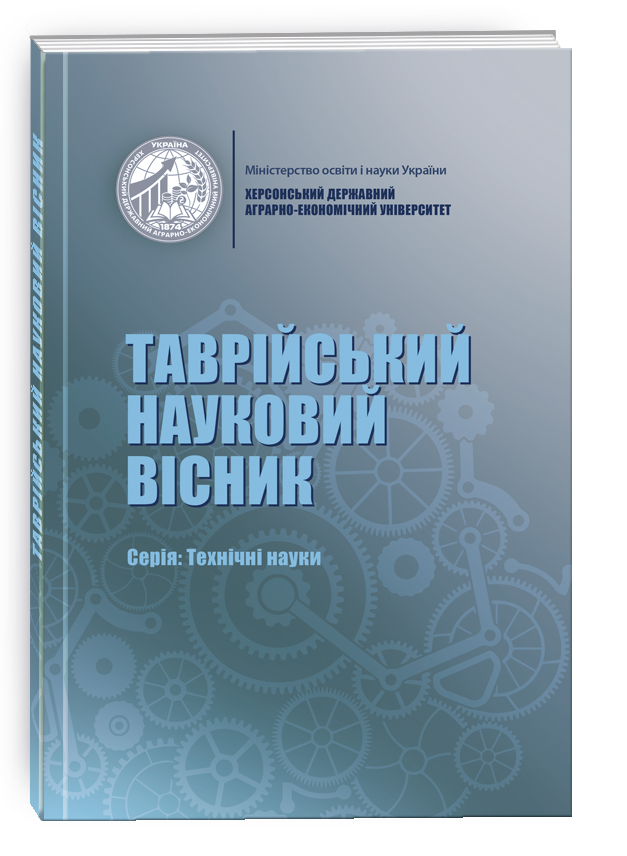ОСНОВНІ МЕТОДИ МОНІТОРИНГУ КОРОЗІЙНИХ ПРОЦЕСІВ ЦЕМЕНТНИХ КОНСТРУКЦІЙ ТА ЇХ ВПРОВАДЖЕННЯ ДЛЯ ПРОЕКТУВАННЯ МОЖЛИВИХ МІНЕРАЛОГІЧНИХ ЗМІН СКЛАДУ МАТРИЦІ: ОГЛЯД
DOI:
https://doi.org/10.32782/tnv-tech.2023.5.23Ключові слова:
бетон, корозія, електричний моніторинг, неруйнівні методи, агресивні середовища, сталева арматура.Анотація
Довготривала служба бетонних конструкцій супроводжується безперервним впливом навколишнього середовища на їх структурну цілісність і здатність підтримувати запроектовані несучі властивості. Ці впливи, здатні змінювати не тільки хімічний склад цементної матриці, але й самі активують корозійні процеси, котрі відбуваються на з’єднаннях металевої арматури і цементної матриці в залізобетоні (ЗБ). Хімічне ініціювання в залізобетоні починається за рахунок міграції води з частинами молекулярного кисню в товщі бетону через пористу структуру матеріалу. Те саме можна сказати про введені сполуки SO4 2- або Cl- вмісних компонентів, котрі також можуть бути присутніми як в навколишньому середовищі, так і в самому бетоні у зв’язку з модифікуванням розчинів. Такі явища зазвичай супроводжуються змінами рН середовища, що є вирішальним для появи електролітичного середовища. Таким чином, процес відновлення води/протону може початися на поверхні арматури, що є причиною не тільки корозії залізобетонної арматури, але й є причиною прискореної деградації цементної матриці. Також слід зазначити, що корозія сталі в ЗБ супроводжується зміною струму. Таким чином, з огляду на розуміння хімічних процесів і змін, які відбуваються в цементній матриці бетону та основ ініціації корозії сталі під впливом агресивних розчинів, розглянуто перелік неруйнівних методів моніторингу (НММ), заснованих на електричних методах моніторингу. Різні підходи з використанням електричних методів моніторингу корозії показали, що використання будь-якої техніки, будь то вимірювання корозійного потенціалу або питомого опору бетону чи поляризаційного опору, надає різні результати в картографуванні зон з високим ризиком корозії, моніторингу неоднорідності бетону та уявлення про транспортні явища (наприклад, потрапляння води та солей) у матеріал. Крім того, прогрес у моніторингу потенціалу без під’єднання до арматури як неруйнівній метод вимірювання показав свою ефективність. Тим не менш, об’єднання результатів як чисельних методів, так і методів НММ необхідне для сортування результатів, щоб забезпечити кращі дані про довговічність роботи ЗБ-структур.
Посилання
Mehta, P. Kumar, and Paulo JM Monteiro. Concrete: microstructure, properties, and materials. McGraw-Hill Education, 2014.https://doi.org/10.1036/0071462899
F. Bart, C. Cau-di-Coumes, F. Frizon, S. Lorente, Cement-Based Materials for Nuclear Waste Storage, Springer, New York, New York, NY, 2013, https://doi.org/10.1007/978-1-4614-3445-0.
V. L’Hostis, R. Gens, Performance Assessment of Concrete Structures and Engineered Barriers for Nuclear Applications, Springer, Netherlands, Dordrecht, 2016, https://doi.org/10.1007/978-94-024-0904-8.
Identifying the influence of redispersed polymers on cement matrix properties / Y. Kovalenko et al. Eastern-European Journal of Enterprise Technologies. 2022. Vol. 4, no. 6(118). P. 38–45. https://doi.org/10.15587/1729-4061.2022.262438
Broomfield, J. P. Corrosion of steel in concrete: understanding, investigation and repair. Crc Press. 2023 https://doi.org/10.1680/coma.2008.161.3.135
Ahmad, S. Reinforcement corrosion in concrete structures, its monitoring and service life prediction – a review. Cement and concrete composites, 2003, 25(4–5), 459–471. https://doi.org/10.1016/S0958-9465(02)00086-0.
Bertolini, L., Elsener, B., Pedeferri, P., Redaelli, E., & Polder, R. B. Corrosion of steel in concrete: prevention, diagnosis, repair. John Wiley & Sons., 2013, https://search.iczhiku.com/paper/9zsdEmIltRikuI3i.pdf
Poursaee, A. Corrosion measurement and evaluation techniques of steel in concrete structures. In Corrosion of steel in concrete structures, 2023, (pp. 219–244). Woodhead Publishing. https://doi.org/10.1016/B978-0-12-821840-2.00027-4
Angst, U. M. Challenges and opportunities in corrosion of steel in concrete. Materials and Structures, 2018, 51, 1–20. https://doi.org/10.1617/s11527-017-1131-6
McCann, D. M., & Forde, M. C. Review of NDT methods in the assessment of concrete and masonry structures. Ndt & E International, 2001, 34(2), 71–84. https://doi.org/10.1016/S0963-8695(00)00032-3
Luo, D., Li, Y., Li, J., Lim, K. S., Nazal, N. A. M., & Ahmad, H. A recent progress of steel bar corrosion diagnostic techniques in RC structures. Sensors, 2018, 19(1), 34. https://doi.org/10.3390/s19010034
Andrade, C., & Martínez, I. Techniques for measuring the corrosion rate (polarization resistance) and the corrosion potential of reinforced concrete structures. In Non-destructive evaluation of reinforced concrete structures, 2010, pp. 284–316. Woodhead Publishing. https://doi.org/10.1533/9781845699604.2.284
Rodrigues, R., Gaboreau, S., Gance, J., Ignatiadis, I., & Betelu, S. Reinforced concrete structures: A review of corrosion mechanisms and advances in electrical methods for corrosion monitoring. Construction and Building Materials, 2021, 269, 121240. https://doi.org/10.1016/j.conbuildmat.2020.121240
François, R., Laurens, S., & Deby, F. Steel corrosion in reinforced concrete. Corrosion and its consequences for reinforced concrete structures. Elsevier, 2018, 1–41. https://doi.org/10.1016/B978-1-78548-234-2.50001-9
Stefanoni, M., Angst, U. M., & Elsener, B. Kinetics of electrochemical dissolution of metals in porous media. Nature Materials, 2019, 18(9), 942–947. https://doi.org/10.1038/s41563-019-0439-8
Rossi, E., Polder, R., Copuroglu, O., Nijland, T., & Šavija, B. The influence of defects at the steel/concrete interface for chloride-induced pitting corrosion of naturallydeteriorated 20-years-old specimens studied through X-ray Computed Tomography.
Construction and Building Materials, 2020, 235, 117474. https://doi.org/10.1016/j.conbuildmat.2019.117474
Effect of environmental pH values on phase composition and microstructure of Portland cement paste under sulfate attack / G. Zhang et al. Composites Part B: Engineering. 2021. Vol. 216. P. 108862. https://doi.org/10.1016/j.compositesb.2021.108862
Bertron A., Duchesne J., Escadeillas G. Accelerated tests of hardened cement pastes alteration by organic acids: analysis of the pH effect. Cement and Concrete Research. 2005. Vol. 35, no. 1. P. 155–166. https://doi.org/10.1016/j.cemconres.2004.09.009
Francois, R., Arliguie, G., & Bardy, D. Electrode potential measurements of concrete reinforcement for corrosion evaluation. Cement and concrete research, 1994, 24(3), 401–412. https://doi.org/10.1016/0008-8846(94)90127-9
Reichling, K., & Raupach, M. Method to determine electrochemical potential gradients without reinforcement connection in concrete structures. Cement and Concrete Composites, 2014, 47, 3-8. https://doi.org/10.1016/j.cemconcomp.2013.12.007
Garcia, S., & Deby, F. Numerical and experimental development of gradient potential measurement for corrosion detection in reinforced concrete. In Service Life and Durability of Reinforced Concrete Structures: Selected Papers of the 8th International
RILEM PhD Workshop held in Marne-la-Vallée, France, September, 2018, 26–27, pp. 71–86. Cham: Springer International Publishing. https://doi.org/10.1007/978-3-319-90236-4_6
Polder, R. B. Test methods for on site measurement of resistivity of concrete – a RILEM TC-154 technical recommendation. Construction and building materials, 2001, 15(2–3), 125–131. https://doi.org/10.1016/S0950-0618(00)00061-1
Azarsa, P., & Gupta, R. Electrical resistivity of concrete for durability evaluation: a review. Advances in Materials Science and Engineering, 2017. https://doi.org/10.1155/2017/8453095
Rengaraju, S., Neelakantan, L., & Pillai, R. G. Investigation on the polarization resistance of steel embedded in highly resistive cementitious systems–An attempt and challenges. Electrochimica Acta, 2019, 308, 131-141. https://doi.org/10.1016/j.electacta.2019.03.200







